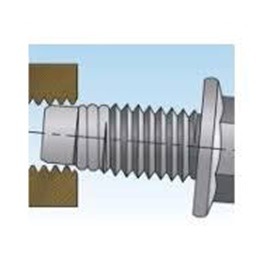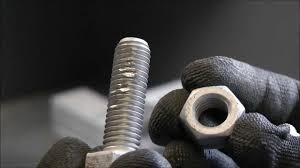Why Does a Nut Suddenly Stop Turning? It Could Be Thread Galling
You have started tightening a nut and suddenly it won’t go any further – what is the problem?
Cross threading
If this happens during the first couple of turns, the likelihood is that you have cross-threaded the nut on the bolt. The cause of this is usually that the nut was offered up to the bolt at an angle, rather than straight.
| CROSS-THREADING THE NUT ON THE BOLT |
 |
Remove the nut carefully and inspect the threads on the bolt. If they look intact you can try again making sure that the nut is properly aligned.
Thread galling
Thread galling is the locking and seizing up of threads during installation. It is sometimes called cold welding. It is actually a wearing of the metal, caused by friction and adhesion between the two metal surfaces of the nut and bolt. When this occurs, the coating of the nut and bolt start to break down and fuse together. In extreme cases galling can completely weld the nut and bolt together making it virtually impossible to take apart.
| THREAD GALLING |
 |
Thread galling is most common on stainless steel fasteners during tightening. Aluminium and titanium are also prone to this problem – both of these materials have high friction coefficients. Hardened metals are generally more resistant to galling.
There are steps that you can take to minimise the problem, as follows;
- Slow down the installation speed – this will reduce the friction
- Don’t use nuts and bolts to pull joints together – the “pulling” action increases the likelihood of galling.
- Use a lubricant such as copper grease or lubricating oil.
- Avoid using damaged or dirty threads wherever possible.
- Take extra care when using nyloc nuts – go slowly
- If a fastener starts to seize, stop immediately.



